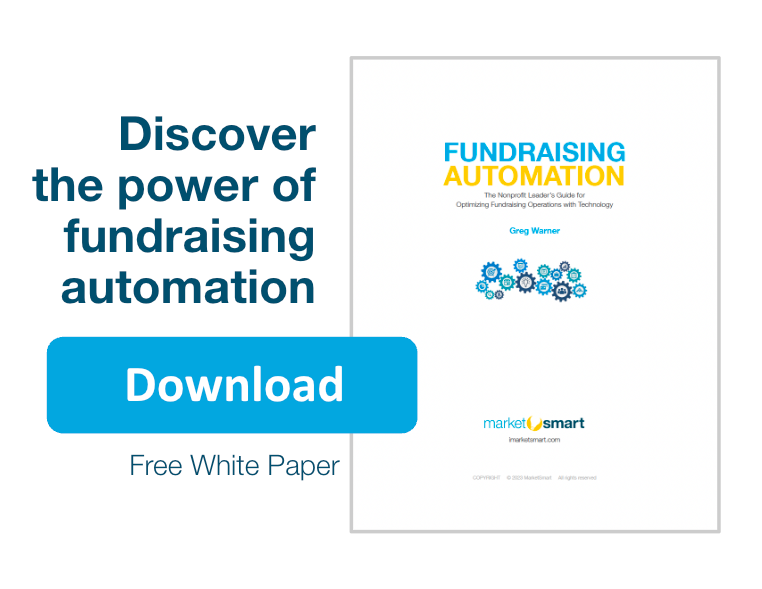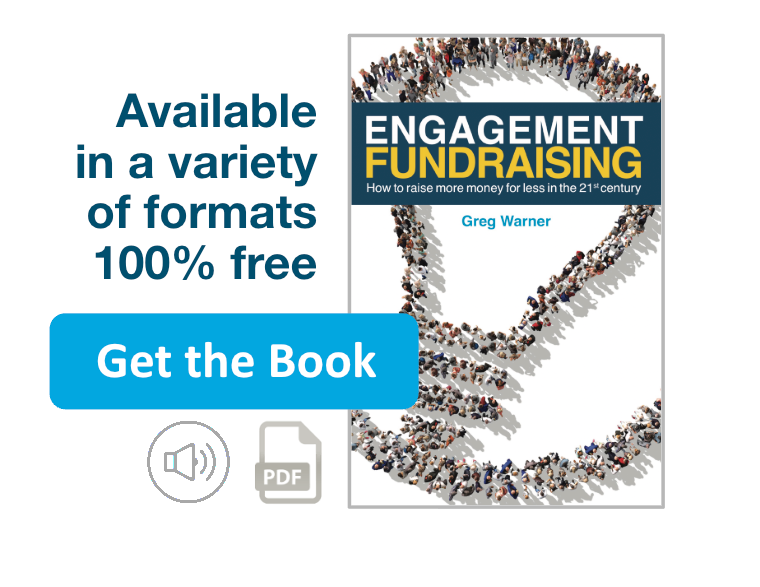1. Don’t Panic
It’s the first rule of crisis management. When we panic we make bad decisions. Many of us have been facing closures, lockdowns and other extreme measures around the pandemic for almost a month, and every organization is thinking about how they can cut nonessential costs. A lot of nonprofits are letting panic cloud their long-term thinking.
Let me say this loud and clear so everyone at the back of the room can hear me: Your fundraising team is NOT a nonessential cost. You need them out there engaging supporters, now more than ever. If you are cutting into their resources (or worse, their team) you are letting panic take over. Instead, invest in these folks, make them feel secure, and give them what they need to engage your supporters so they will provide the necessary funds that will bring you out of this stronger than ever. Your fundraisers are your direct line of communication to the heroic donors out there looking for ways to support you. Give them everything they need to do their jobs. Give them a pat on the back. And, give them encouragement. They deserve your support.
Yet, if you are going to cut costs, do it with a scalpel — not a sledgehammer. With everything changing so rapidly, there is a lot of pressure to make decisions quickly, but I would encourage you to take a deep breath and think about what you are doing. Measure twice and cut once. Analyze how your decisions will affect your organization in the long-run.
2. Focus on the 80/20
In times of distress, people with capacity give! Remember that, according to the Fundraising Report Card’s Benchmarks, major donors retain at much higher rates than low dollar donors. In fact, as of this writing, the retention rate for new low-dollar donors (giving under $100) is only around 23.4% while the rate for new major donors (giving over $5,000) is just under 40%
Plus according to the same live benchmarks, 80% of donors giving under $100 make up only about 7% of all the donation dollars while just about .57% of donors (those who are giving over $5,000) make up 67.4% (⅔) of all donation revenue.
In other words, to fill big holes in your budget you need big donors to step up.
Now more than ever, you must focus your outreach on your loyal donors with capacity to give first. If you are having trouble deciding where to start, you might consider a survey to generate major gift leads. Even for donors that you have close relationships with, a survey can help you gauge areas of interest and likelihood of giving prior to your direct outreach.
Start by sending a survey to your major donors and prospects. They will respond, I promise! We’ve been sending surveys to major donors for over a decade now. They do respond!
Be sure to determine your key areas of financial need and ask a likert scale question to gauge their likelihood to step up and help. Then, of course, those who respond positively should go on your list for direct outreach immediately.
Also remember that 80% of your organization’s planned gift revenue will most likely come from just 20% of your legacy gift donors — the people with wealth. When prioritizing outreach efforts to your legacy society members, don’t forget to prioritize these people for standing with you during these troubled times.
Stay tuned for parts 2 and 3 of these ‘covid-19-era’ posts. And, as always, let us know if you’d like to talk. We’re ready to help you raise more major gifts to support your organization now, and raise legacy gifts to secure its future for years to come.




